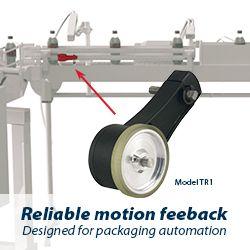The Tiny Radar Chip Revolutionizing Gesture Recognition: Google ATAP's Project Soli
Hebocon World Championship 2016
Vyo Is a Fascinating and Unique Take on Social Domestic Robots
Forget self-driving cars: What about self-flying drones?
SUNSPRING by 32 Tesla K80 GPUs
Real-time behaviour synthesis for dynamic Hand-Manipulation
Ingestible origami robot
Artistic Style Transfer for Videos
Zero Zero Hover Camera drone uses face tracking tech to follow you
Face2Face: Real-time Face Capture and Reenactment of RGB Videos
US to sail submarine drones in South China Sea
SCHAFT Unveils Awesome New Bipedal Robot at Japan Conference
Efficient 3D Object Segmentation from Densely Sampled Light Fields with Applications to 3D Reconstruction
Cafe X Robotic Barista
OpenROV Trident Pre-orders
Records 91 to 105 of 171
First | Previous | Next | Last
Featured Product

